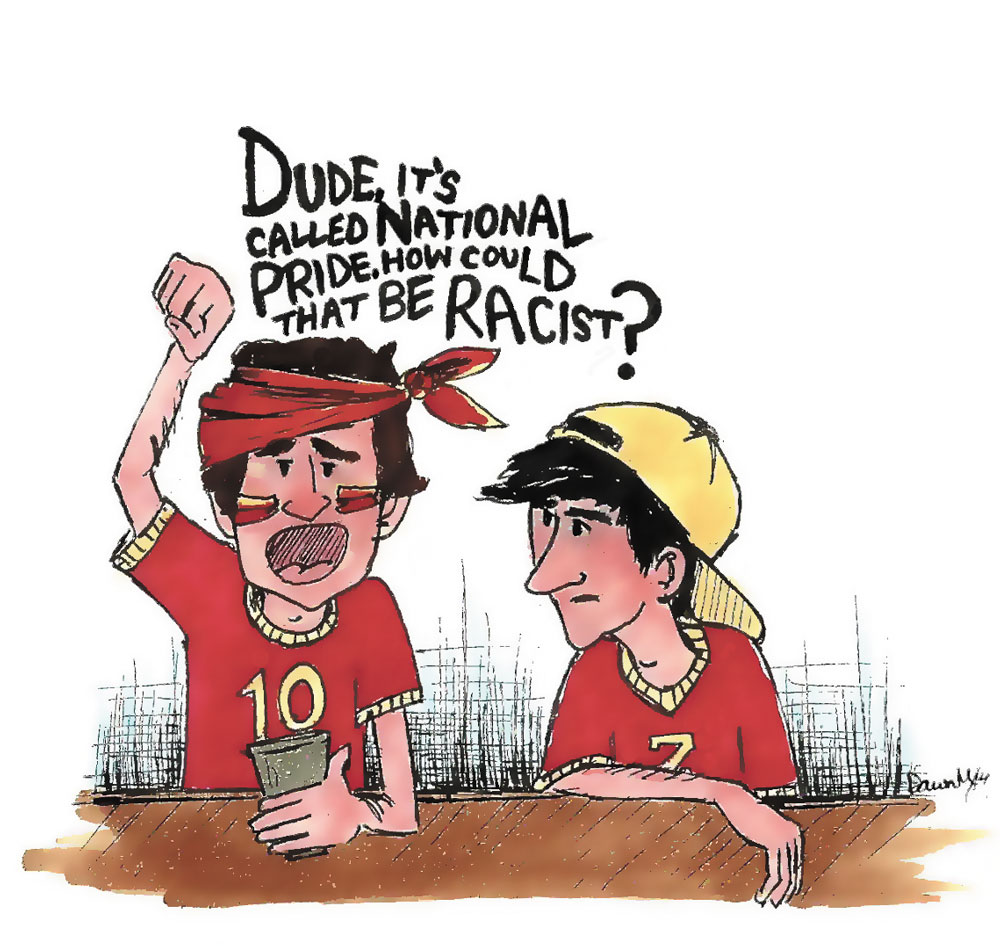
When racism spills onto the pitch
By Ashton Chugh, May. 22, 2014 —
During a soccer match in 1981, fans of Millwall Football club referenced the racially motivated attacks of black youths in the New Crosshouse fire to create a sporting chant. Fast forward thirty years, and racism in soccer has remained just as prevalent.
Sporting culture is aggressive and unfriendly. Chanting at sporting events relies on inflammatory rhetoric and a mob mentality. These chants are often crass and provocative, designed to offend and evoke a strong reaction. The main issue is that sporting culture is not an isolated cultural event. It comes from our own prejudice and hatred, functioning as a microcosm of the dangerous thoughts and institutionalized discrimination that we won’t articulate in polite society.
European soccer has many of the most vivid examples of racist behaviour. Paolo Di Canio is an avowed fascist who coached an English Premiere League team for several years. BBC journalists describe matches in Poland as “a chorus of anti-Semitic chanting” where they also witnessed “black soccer players enduring monkey chants.” In Spain, bananas are thrown at black players from the stands. These are not isolated incidents — all of them are commonplace and have happened multiple times within the last four years.
Racism in soccer recently got renewed attention as Dani Alves, a Barcelona Soccer Club defender, sparked a large anti-racism protest by eating a banana that was thrown at him on the pitch. When the banana landed near his feet, he picked it up and took a large bite before continuing the game. Although the subsequent social media campaign was part of a marketing strategy, at least it forced soccer players and fans to briefly confront racism rather than ignore it.
Cases like this are common, but it is by no means the full extent of racism in soccer. In a match against Tottenham Hotspurs — a soccer club in a historically Jewish area of London — West Ham United fans chanted “you’re getting gassed in the morning” at Tottenham players and fans. South Asian players — particularly Pakistani players — often face slurs and accusations of terrorism.
Some argue that these incidents are isolated and do not represent the fans or European culture in general. Others argue that the context of racial slurs is what allows us to determine whether the words were offensive or not. These arguments misunderstand racialized slurs in their institutionalized context. The use of slurs in sports is not unacceptable because the words are offensive. It is not unacceptable because the words annoy us or make us feel bad. Racial slurs are unacceptable because they are intrinsically violent. Context is irrelevant, and reclamation is only a suitable argument if you belong to the group that the slur describes. These words normalize racialized violence and reinforce systematic oppression.
In sporting institutions no one is united on how to deal with instances of racism. Options like fines and lifetime bans always draw criticism. Likely, the larger issue is that racism is not just a sporting problem. Sporting culture may amplify the current appearance of racism in European society, but it is not unique to the soccer pitch or the stands.
With the World Cup in Brazil fast approaching, it’s important that all players and soccer institutions confront racism with one voice and a unified policy. If sporting culture is a microcosm of our communities, there is a real possibility we could bring about small measures of change and real tolerance through the beautiful game.
